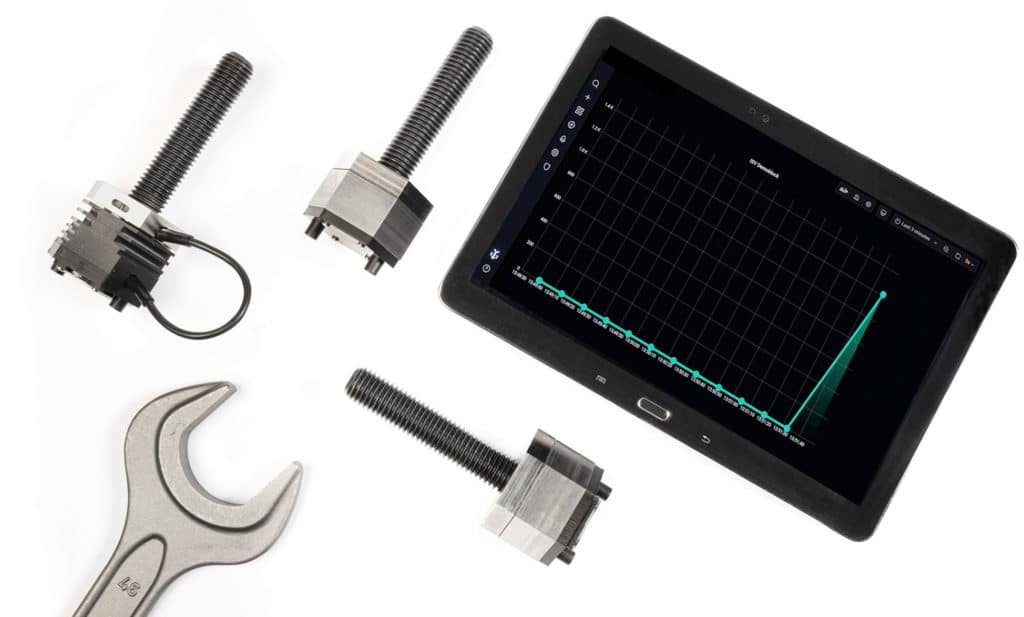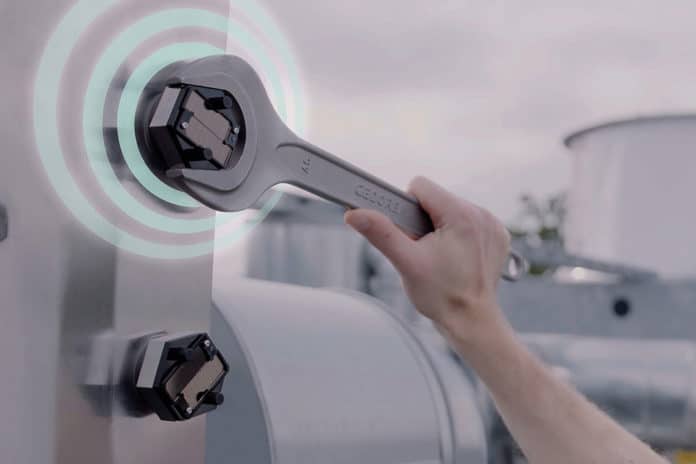Structures such as bridges, wind turbines, and scaffolding are held together by bolts that could come loose with catastrophic results. The screw connections must therefore be checked on a regular basis.
It may sound a little strange, but a team of researchers from the Fraunhofer Cluster of Excellence Cognitive Internet Technologies CCIT has now developed a solution called “Smart Screw Connection” that allows the stability of the screw connections to be checked at any time by remote monitoring. It combines sensors and radio technology to provide a reliable means of remotely monitoring the screw connections – not to mention that it is self-powered.
The Smart Screw Connection comes with a screw fitted with a washer that is equipped with a pressure sensor made of a piezoresistive DiaForce thin film. When the screw is initially tightened, the pressure-sensitive sensors register the preload force at three different points. Any change in the preload force at any of those points changes the electrical resistance in the DiaForce thin film.

When a screw comes loose, the resulting change in resistance is reported to a radio module located on the screw head. The radio module, in turn, sends an encrypted warning signal to a nearby base station that can be remotely accessed via the internet by maintenance personnel. Using an online portal, it’s also possible to check the status of every Smart Screw Connection in a given object at any time. This will prevent many accidents and simplify the process of technical inspection of large objects.
The Smart Screw Connection can be adapted for a wide variety of applications. No matter whether it’s for flange connections in the industry, for the bolts in steel girders in high-rise buildings, for the load-bearing parts of bridges, or for attaching rotors to wind turbines – the system can be individually configured for each scenario and adapted to the relevant load profile.
Moreover, the engineers have also resolved the problem of energy demand in a resource-efficient manner. The system operates according to the energy harvesting principle that involves the use of heat or light to generate electricity. For this, the smart device can be equipped with a thermoelectric generator, which generates electricity from the minute differences in temperature between the screw head and the environment. It is also possible to generate electricity through solar cells.
“This remote monitoring system allows us, for the first time, to keep an eye on the stability of safety-critical infrastructures at all times, even remotely, and to carry out a proper check on every single relevant screw. This is a major asset in terms of safety. When inspecting a bridge or wind turbine, no engineer is required to be on-site and check each screw individually, as all the data are transmitted via radio to the service station,” says Dr. Peter Spies, the project manager.
The authors of the idea are confident that their invention will be in high demand at large facilities where it is necessary to frequently inspect screw connections – we are talking about bridges, wind farms, storage facilities, and more. Thanks to this notification system, engineers will not need to spend so much time on a full-fledged inspection of the facility.
